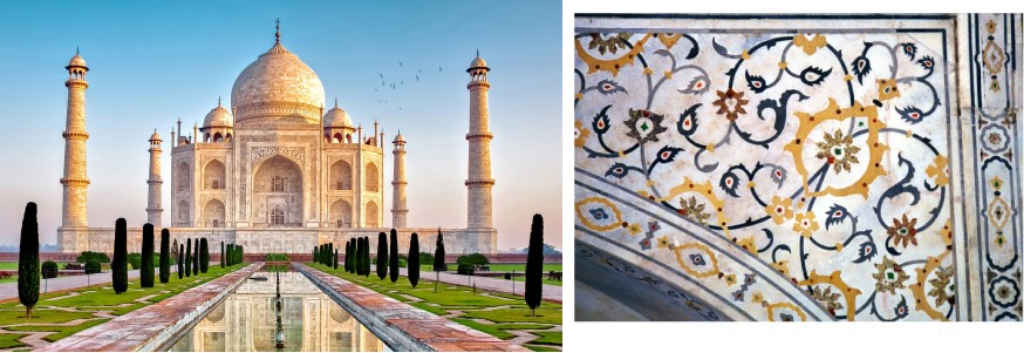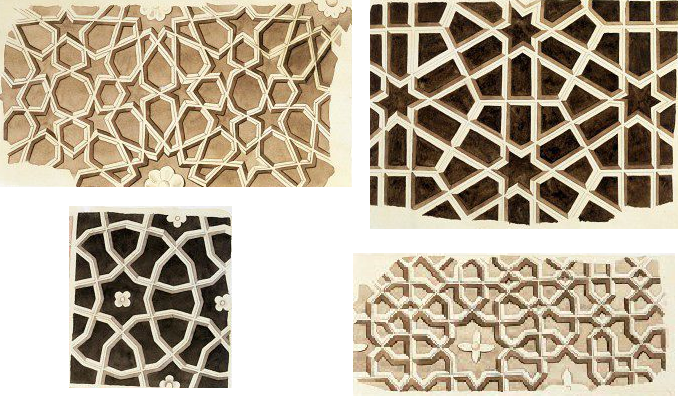E.H. Hanking
Ernest Hanbury Hanking (1865 - 1939) was a British biologist working in colonial British-India. Apart of his studying on diseases as malaria and cholera he was also interested in Islamic patterns on the monuments of Mogul emperors from the 15th until the 18th century.
Taj Mahal
The Taj Mahal, the mausoleum built by emperor Sjah Jehan between 1632 and 1648 for his deceased wife is not only the most famous of these mogul monuments but one of the most famous in the world. The walls of the monuments are decorated with floral motives, but it was another type of decoration in which Hanking was interested.

Fatehpur Sikri
As a scientist Hanking was fascinated by the geometric patterns he found
in Fatehpur Sikri, the ceremonial city emperor Akbar built. It was the capital of
the Mogul empire from 1571 until 1585, when it was abandoned for unknown
reasons.
